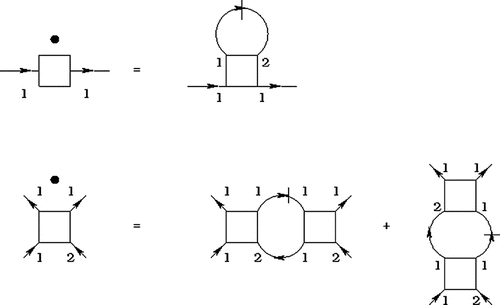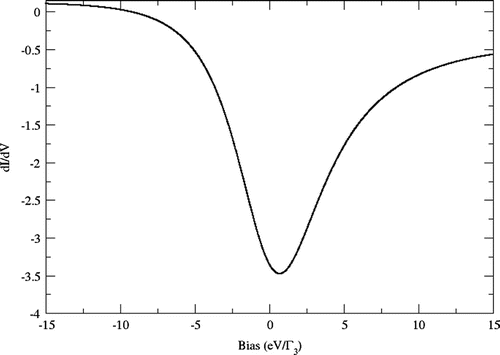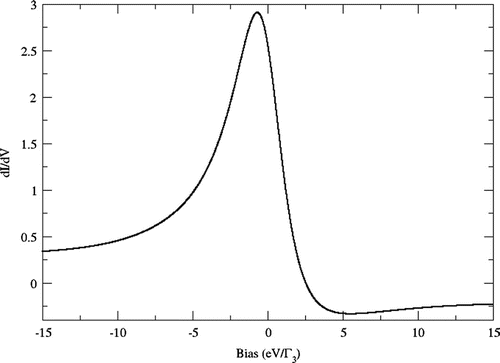Figures & data
Figure 1. STM tip coupled to a host surface with an impurity. Notes: The tunneling matrix elements and
represent the couplings tip-impurity, tip-surface and impurity-surface, respectively. The tip-impurity lateral distance is denoted by r.
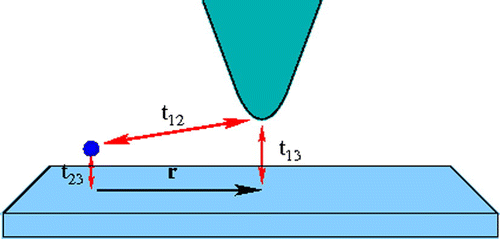
Figure 2. The Green functions of the impurity , substrate
, and tip
. Notes: Feynman diagrams for the hybridizations
,
and
. The self-energy
include two tunneling events: an electron can tunnel from the impurity to the substrate and from the impurity to the tip. The interaction
contains the physical event that an electron from the tip jump to the surface and then to the impurity.
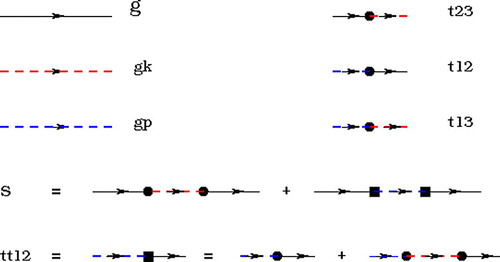
Figure 3. Flow equations. Notes: The dots over the vertices indicate a derivative with respect to the flow parameter , the lines connecting different vertices are different Green’s functions in the Keldysh formalism. Each of the Green’s functions have a contribution from the self-energy in Figure which is denoted by a contribution
to the Green’s function.
